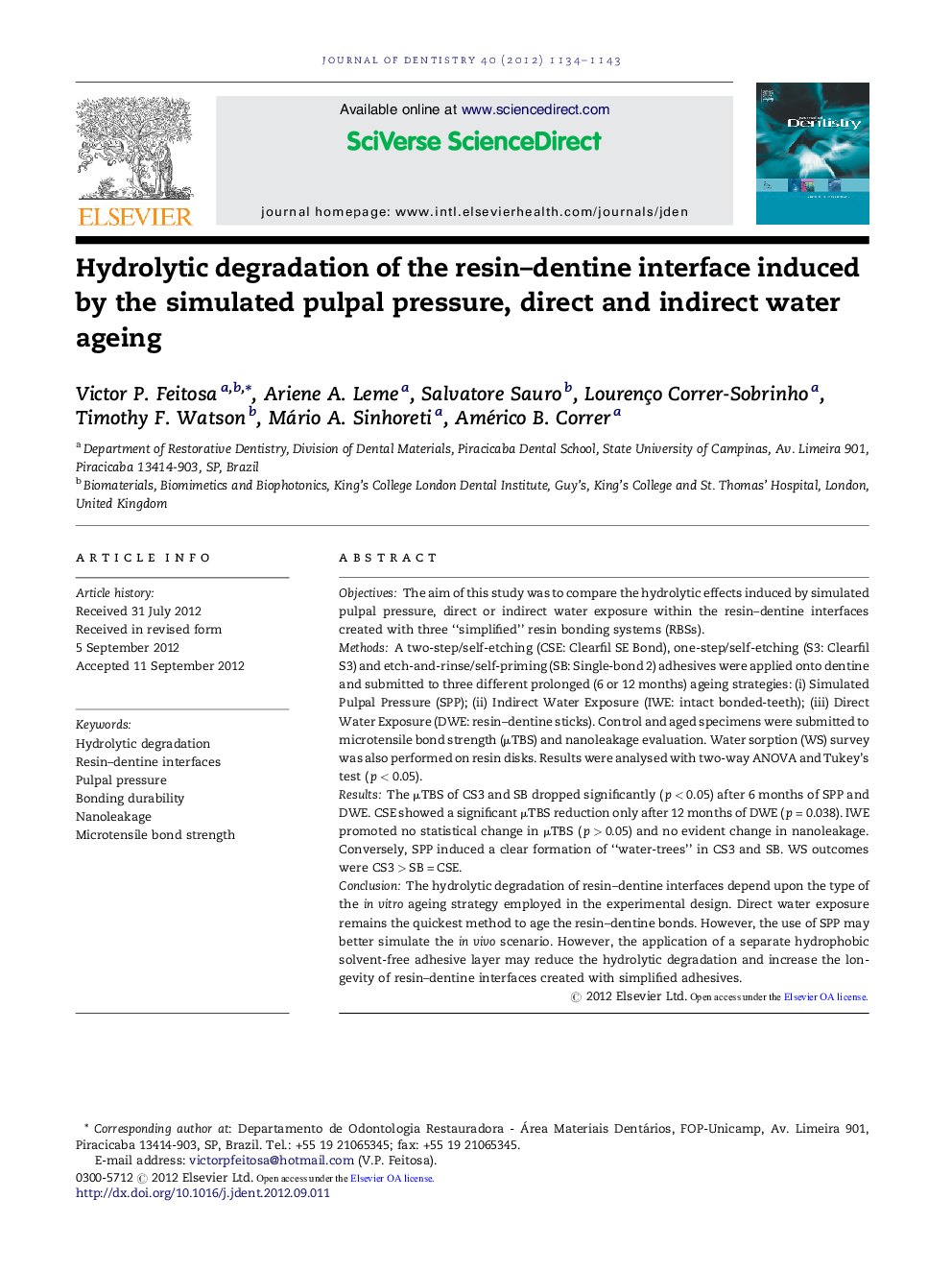| کد مقاله | کد نشریه | سال انتشار | مقاله انگلیسی | نسخه تمام متن |
|---|---|---|---|---|
| 6053703 | 1585486 | 2012 | 10 صفحه PDF | دانلود رایگان |

ObjectivesThe aim of this study was to compare the hydrolytic effects induced by simulated pulpal pressure, direct or indirect water exposure within the resin-dentine interfaces created with three “simplified” resin bonding systems (RBSs).MethodsA two-step/self-etching (CSE: Clearfil SE Bond), one-step/self-etching (S3: Clearfil S3) and etch-and-rinse/self-priming (SB: Single-bond 2) adhesives were applied onto dentine and submitted to three different prolonged (6 or 12 months) ageing strategies: (i) Simulated Pulpal Pressure (SPP); (ii) Indirect Water Exposure (IWE: intact bonded-teeth); (iii) Direct Water Exposure (DWE: resin-dentine sticks). Control and aged specimens were submitted to microtensile bond strength (μTBS) and nanoleakage evaluation. Water sorption (WS) survey was also performed on resin disks. Results were analysed with two-way ANOVA and Tukey's test (p < 0.05).ResultsThe μTBS of CS3 and SB dropped significantly (p < 0.05) after 6 months of SPP and DWE. CSE showed a significant μTBS reduction only after 12 months of DWE (p = 0.038). IWE promoted no statistical change in μTBS (p > 0.05) and no evident change in nanoleakage. Conversely, SPP induced a clear formation of “water-trees” in CS3 and SB. WS outcomes were CS3 > SB = CSE.ConclusionThe hydrolytic degradation of resin-dentine interfaces depend upon the type of the in vitro ageing strategy employed in the experimental design. Direct water exposure remains the quickest method to age the resin-dentine bonds. However, the use of SPP may better simulate the in vivo scenario. However, the application of a separate hydrophobic solvent-free adhesive layer may reduce the hydrolytic degradation and increase the longevity of resin-dentine interfaces created with simplified adhesives.
Journal: Journal of Dentistry - Volume 40, Issue 12, December 2012, Pages 1134-1143